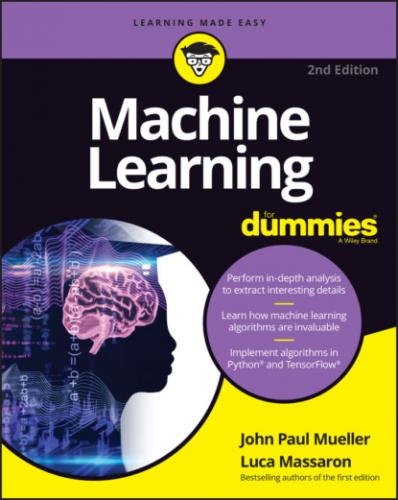Working for a machine
It’s entirely possible that you’ll find yourself working for a machine in the future. In fact, you might already work for a machine and not know it. Some companies already use machine learning to analyze business processes and make them more efficient. For example, Hitachi currently uses such a setup in middle management (see the article at http://www.hitachi.com/New/cnews/month/2015/09/150904.html). In this case, the AI actually issues the work orders based on its analysis of the workflow — just as a human middle manager might do. The difference is that the AI is actually eight percent more efficient than the humans it replaces.
However, a job opportunity also presents itself. Workers under the AI do perform the tasks that the AI tells them to do, but they can use their own experience and creativity in determining how to perform the task. The AI analyzes the processes that the human workers use and measures the results achieved. Any successful processes get added into the database of techniques that workers can apply to accomplish tasks. In other words, the humans are teaching the AI new techniques to make the work environment even more efficient.
Teaching the AI new techniques is an example of how machine learning can free humans from the drudgery of the work environment. When using human middle managers, new processes often get buried in a bureaucracy of unspoken rules and ego. The AI middle manager is designed to learn new techniques without bias, so the humans are encouraged to exercise their creativity, and everyone benefits. In short, the AI, which lacks an ego to bruise, is the approachable manager that many workers have wanted all along when it comes to implementing new ideas that make everyone more productive.
https://www.theverge.com/2020/2/27/21155254/automation-robots-unemployment-jobs-vs-human-google-amazon. In order to create a harmonious integration, the machine learning algorithms also need to consider worker safety and happiness in the future, which is something that only a human manager can do at the moment.
Working with machines
People already work with machines on a regular basis — they may just not realize it. For example, when you talk to your smartphone and it recognizes what you say, you’re working with a machine to achieve a desired goal. Most people recognize that the voice interaction provided with a smartphone improves with time — the more you use it, the better it gets at recognizing your voice. As the learner algorithm becomes better tuned, it becomes more efficient at recognizing your voice and obtaining the desired result. This trend will continue.
However, machine learning is used in all sorts of ways that might not occur to you. When you point a camera at a subject and the camera can put a box around the face (to help target the picture), you’re seeing the result of machine learning. The camera is helping you perform the job of taking a picture with far greater efficiency. In addition, the camera automatically removes at least some of the effects of shaking and bad lighting. Cameras have become quite good at assisting humans to perform tasks with aplomb.
The use of declarative languages, such as SQL (Structured Query Language), will become more pronounced as well because machine learning will make advancements possible. In some respects, a declarative language simply lets you describe what you want and not how to obtain it. However, SQL still requires a computer scientist, data scientist, database administrator, or some other professional to use. Future languages won’t have this limitation. Eventually, someone who is trained to perform a particular task well will simply tell the robot assistant what to do and the robot assistant will discover the means to do it. Humans will use creativity to discover what to do; the details (the how) will become the domain of machines.
Repairing machines
Most of this chapter discusses current technology, where the technology will go in the future, and why things work as they do. However, notice that the discussion always focuses on the technology doing something. That’s right, before the technology can do anything else, it must perform a practical task that will attract attention and benefit humans in a manner that makes people want to have the technology for their own. It doesn’t matter what the technology is. Eventually, the technology will break. Getting the technology to do something useful is the prime consideration now, and the culmination of any dreams of what the technology will eventually do stretches years into the future, so mundane things like repairing the technology will still fall on human shoulders. Even if the human isn’t directly involved with the physical repair, human intelligence will direct the repair operation.
https://space.io9.com/a-self-repairing-space-robot-on-the-international-space-1580869685). What the stories don’t say is that a human decided how to perform the task and directed the robots to do the physical labor. Self-repair is becoming achievable. The articles at https://spectrum.ieee.org/automaton/robotics/robotics-hardware/japanese-researchers-teaching-robots-to-repair-themselves and https://www.robotics.org/blog-article.cfm/How-Self-Healing-Robots-Repair-Themselves/219 describe how far the technology has come.
Creating new machine learning tasks
Machine learning algorithms aren’t creative, which means that humans must provide the creativity that improves machine learning. Even algorithms that build other algorithms only improve the efficiency and accuracy of the results that the algorithm achieves — they can’t create algorithms that perform new kinds of tasks. Humans must provide the necessary input to define these tasks and the processes needed to begin solving them.
Devising new machine learning environments
At the moment, devising new machine learning environments is the realm of research and development companies. A group of highly trained specialists must create the parameters for a new environment. For example, NASA needs robots to explore Mars. In this case, NASA relies on the skills of people at MIT and Northeastern to perform the task (see the story at https://www.computerworld.com/article/3007393/robotics/nasa-needs-robotic-upgrades-for-work-on-mars.html). Given that the robot will need to perform tasks
